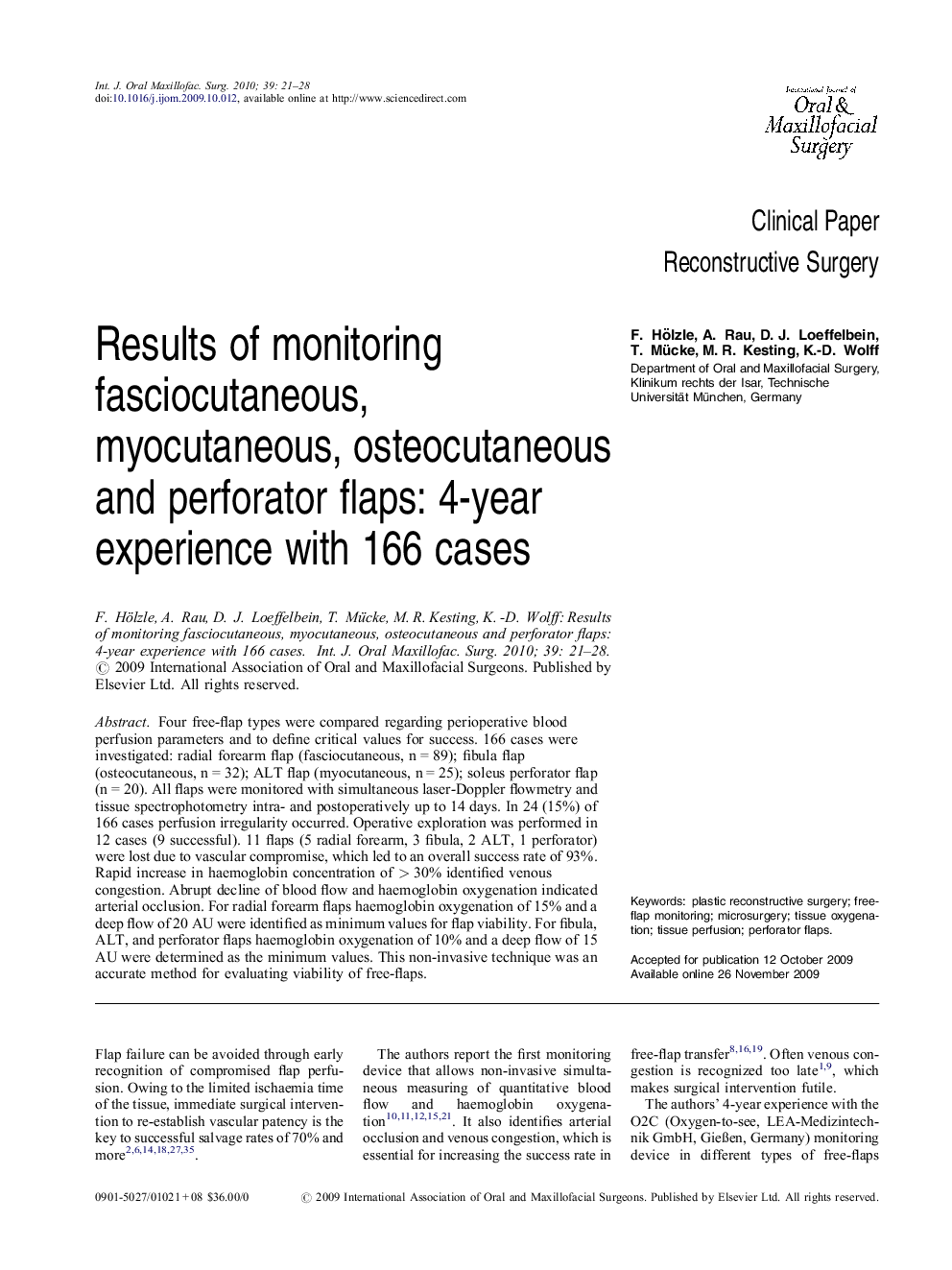| Article ID | Journal | Published Year | Pages | File Type |
|---|---|---|---|---|
| 3133817 | International Journal of Oral and Maxillofacial Surgery | 2010 | 8 Pages |
Four free-flap types were compared regarding perioperative blood perfusion parameters and to define critical values for success. 166 cases were investigated: radial forearm flap (fasciocutaneous, n = 89); fibula flap (osteocutaneous, n = 32); ALT flap (myocutaneous, n = 25); soleus perforator flap (n = 20). All flaps were monitored with simultaneous laser-Doppler flowmetry and tissue spectrophotometry intra- and postoperatively up to 14 days. In 24 (15%) of 166 cases perfusion irregularity occurred. Operative exploration was performed in 12 cases (9 successful). 11 flaps (5 radial forearm, 3 fibula, 2 ALT, 1 perforator) were lost due to vascular compromise, which led to an overall success rate of 93%. Rapid increase in haemoglobin concentration of > 30% identified venous congestion. Abrupt decline of blood flow and haemoglobin oxygenation indicated arterial occlusion. For radial forearm flaps haemoglobin oxygenation of 15% and a deep flow of 20 AU were identified as minimum values for flap viability. For fibula, ALT, and perforator flaps haemoglobin oxygenation of 10% and a deep flow of 15 AU were determined as the minimum values. This non-invasive technique was an accurate method for evaluating viability of free-flaps.
